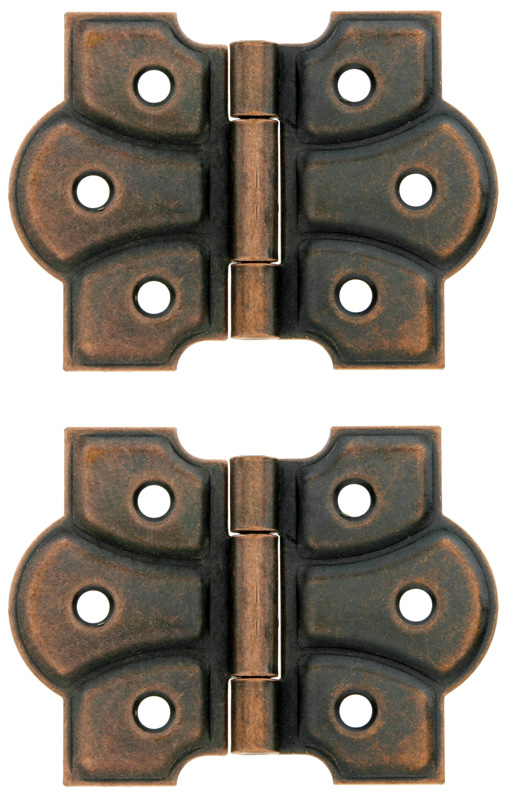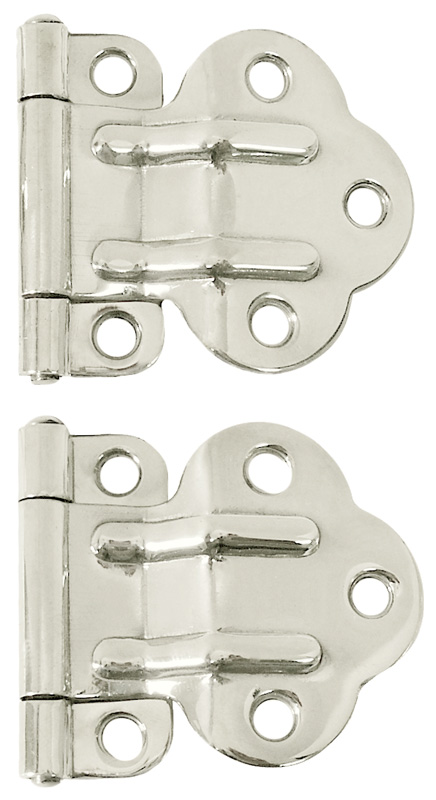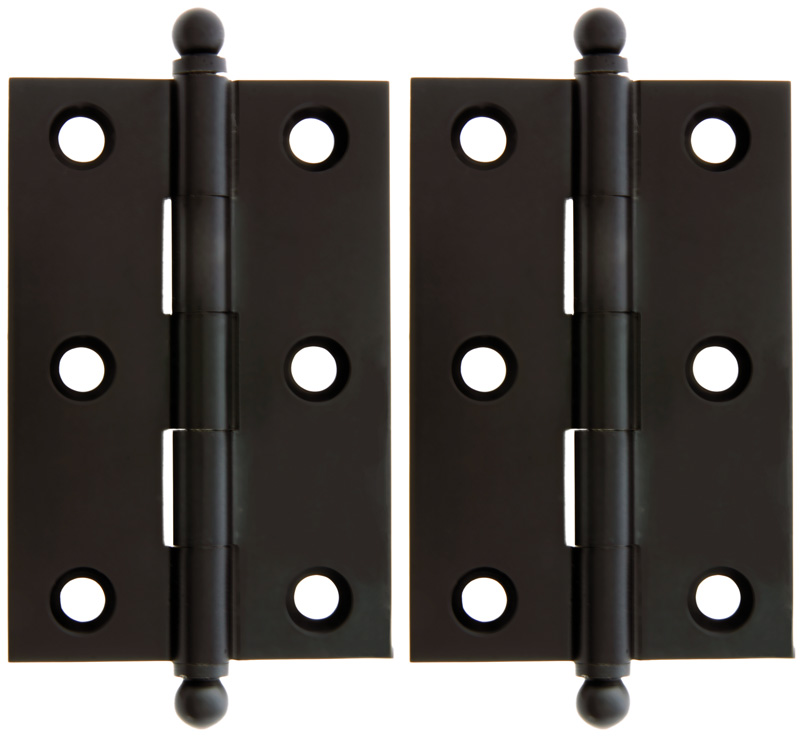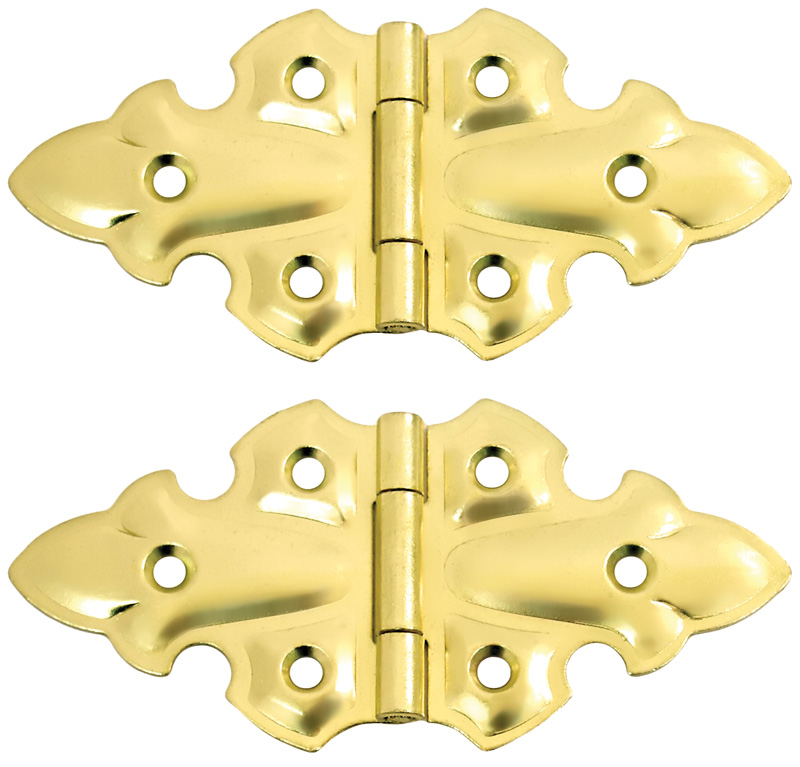The pair of Colonial-style smooth iron offset heart strap hinges come from House of Antique Hardware.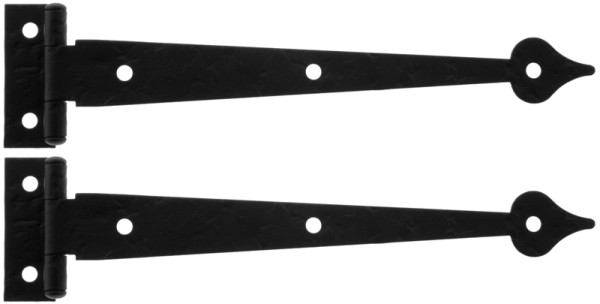
For reasons of function and appearance, hinges are integral to cabinet design. First determine the type of cabinet you have: it is face frame, or frameless? A face-frame cabinet has a 1½” to 2″ solid frame attached to the front edges of the case, and the hinges mount to this face. A frameless cabinet (sometimes called a Euro-style cabinet) is a four-sided box; hinges mount to the cabinet’s interior. Next look at door construction. Overlay doors cover the cabinet completely, overlapping the cabinet face frame on all sides, while inset doors fit within the cabinet opening and are flush with the sides or face frame. Partial-inset or lipped doors overlap the cabinet somewhat, but with a 3⁄8″ shoulder machined along the edges on the back of the door that allows part of the door to sit inside the opening. Frameless cabinets can have either full overlay doors that cover all of the front edge (typically for the ends of a cabinet run), half-overlay that cover half of the partition wall (usually at the middle of a run), or inset doors that fit flush within the front edges of the cabinet.
Decide if you want to see the hinge. Will it be part of the style marker, or decorative in itself—or do you want it hidden from view? Three choices to consider: Concealed, full hidden hinges are best when hardware will detract from the cabinet. Semi-concealed hinges are partially visible when the door is closed, and can be detailed with a ball tip or other finial. Exposed (surface mounted) hinges are fully visible on the front of the cabinet when the door is closed.
Do you want a traditional or European hinge? Traditional butt hinges, composed of two pivoting plates held together with a pin, may require a mortise. European hinges are concealed with a mounting plate on the cabinet and a cup that is mortised into the back of the door. These work best on frameless cabinets (and have the advantage of being adjustable for precise door alignment). Wraparound hinges have leaves that wrap around the edge of the door and/or cabinet. You may want to consider how far and to what angle you want the door to open. Some hinges let a door open just 90 degrees; others allow it to completely swing back against the cabinet.
Other special features: self-closing (and soft-close) hinges pull the door shut; self-opening hinges pop the door open when activated by a push. Buy enough hinges to support the door. Most are sold in pairs, as cabinet doors ordinarily have two hinges each. If the door is especially large or heavy, use more.
Hinges By Style
Consider choosing hinges to match the period of your cabinets. “If you’re not sure,” say the experts at House of Antique Hardware, “remember that simple ball-tip hinges look good for just about every era. Don’t worry—in the kitchen, the hardware finish doesn’t have to match fixtures or appliances.”
Colonial Forged iron H, HL, and strap hinges were most common, kept simple and finished in flat black.
Victorian More elaborate designs with overlay or butterfly-type hinges, typically on flush frame cabinets, were common, with fancier brass or brass-plated finishes the most popular. Iceboxes often had heftier strap hinges.
Arts & Crafts Heavier overlay and butterfly hinges were back in vogue, along with classic ball-tip mortise hinges, now darker with oil-rubbed bronze or two-toned japanned finishes.
Colonial Revival Two styles were common: both the traditional ball-tip mortise hinge (most popularly in brass), and heavier iron strap hinges for an antique or primitive look, left natural or painted flat black.
Art Deco/Modern Streamlined offset surface hinges were the rage, as cabinet doors were now overlay rather than flush. Nickel and chrome were the most popular finishes (emphasizing a sanitary aspect), sometimes with color such as inlaid red striping.



